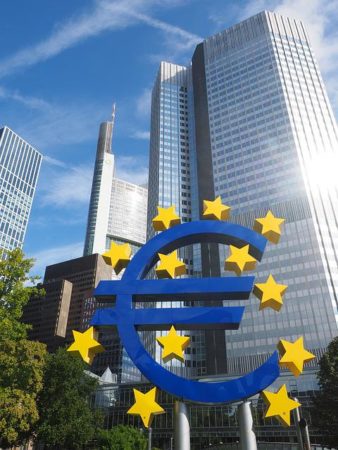How high will eurozone interest rates go?
The UK is far from alone as it struggles with soaring inflation, as fiscal policymakers in Europe are also looking at keeping rising costs under control.
The European Central Bank (ECB) recently confirmed that it plans to increase interest rates for the first time in more than a decade. At the moment, the main policy interest rate is set at -0.50 per cent, but in a statement, the ECB said it would be raised by 25 basis points at its July monetary policy meeting.
That would be the first time the bank has raised interest rates in 11 years – and this could be far from a one-off intervention.

In fact, the organisation says it expects to increase interest rates for a second time in September, and has hinted that this rate hike could be even bigger if the medium-term inflation outlook “persists or deteriorates”.
Furthermore, the ECB believes a “gradual but sustained path” of further interest rate increases may be necessary throughout the autumn and winter months.
Annual inflation in the euro area is estimated to hit 8.1 per cent in May 2022, up from 7.4 per cent in the previous month, which is well above the ECB’s target of two per cent over the medium term.
If you have investments in the eurozone area and are concerned about how they’ll be affected by rising inflation and interest rate hikes, now might, therefore, be a good time to seek professional, regulated financial advice, so you can make an informed, logical decision on what to do next.
What’s driving inflation across the eurozone?
Surging food and energy prices, together with the impact of Russia’s invasion of Ukraine, have been cited as the main reasons behind rising inflation in Europe.
The ECB estimates that inflation will remain “undesirably elevated” for some time. However, it’s confident that inflation will come down as energy costs moderate, supply disruptions linked to the pandemic start to ease and monetary policy normalises.
According to the ECB’s forecasts, annual inflation in the eurozone will hit 6.8 per cent this year. It will then fall to 3.5 per cent in 2023, before dropping again to 2.1 per cent in 2024.
That means it will probably be several years at least until inflation in the euro area comes anywhere close to the ECB’s target.
At the same time, the Russian invasion of Ukraine remains an unpredictable variable, as we have no idea how long the conflict and its resulting impact on energy prices and supply chains will last.
Despite this uncertainty, which the ECB acknowledges will “weigh on confidence and dampen growth” in the near term, the bank is confident the conditions are in place for the economy to continue to grow.
The ECB expects gross domestic product in the eurozone to go up by 2.8 per cent this year, and then moderate to 2.1 per cent in 2023 and 2.1 per cent again in 2024.
We should point out that while the forecasts for 2022 and 2023 are slightly down on the projections issued in March, the estimate for 2024 has actually been revised upwards.
It may therefore be the case that the best thing investors with interests in the euro area can do is to avoid acting rashly and sit tight until the economic headwinds ease and the markets stabilise.
If this has got you thinking or worried, we’re here to help. Get in touch and we’ll talk you through your options. Or sign up to our monthly newsletter, to keep your finger on the pulse.
Sam Murphy – 24th June 2022

Sources